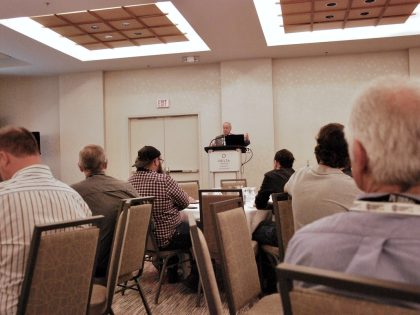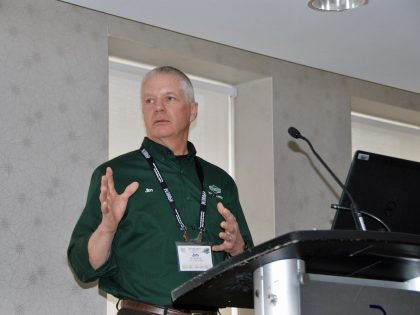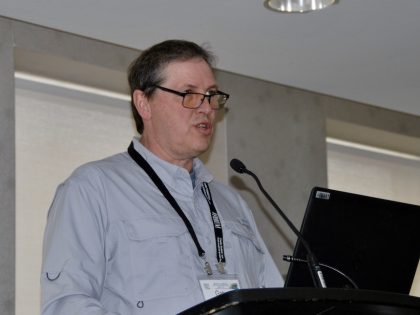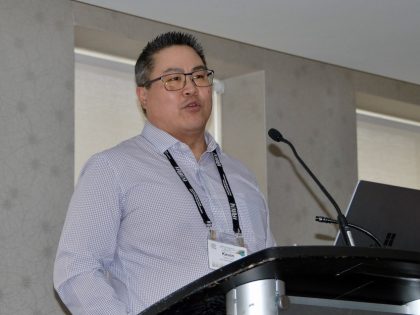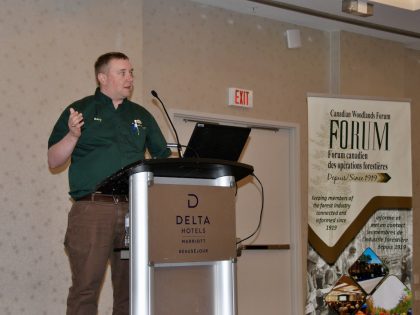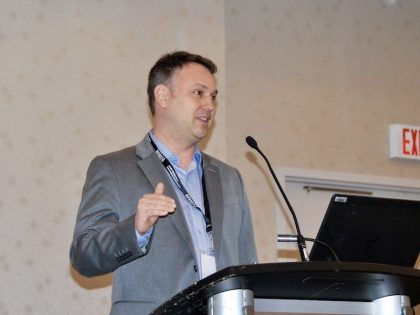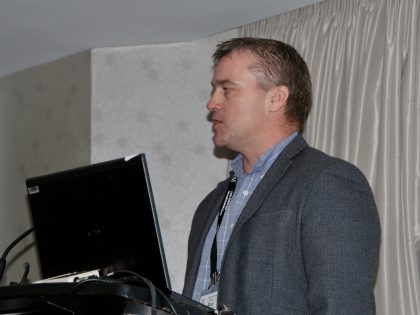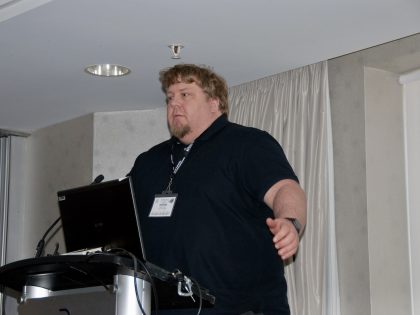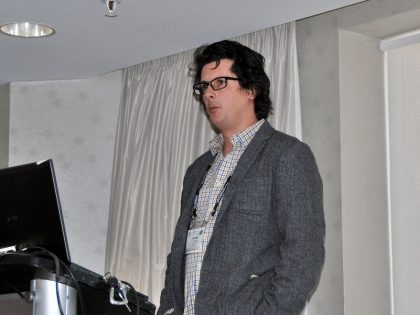
Features
CWF Spring Meeting considers forestry’s future in Atlantic Canada
CFI joined more than 200 people at the Canadian Woodland Forum’s Spring Meeting to talk sector challenges and growth opportunities, including new technologies, climate change, workforce attraction, mass timber and the carbon market.
April 18, 2022 By Maria Church
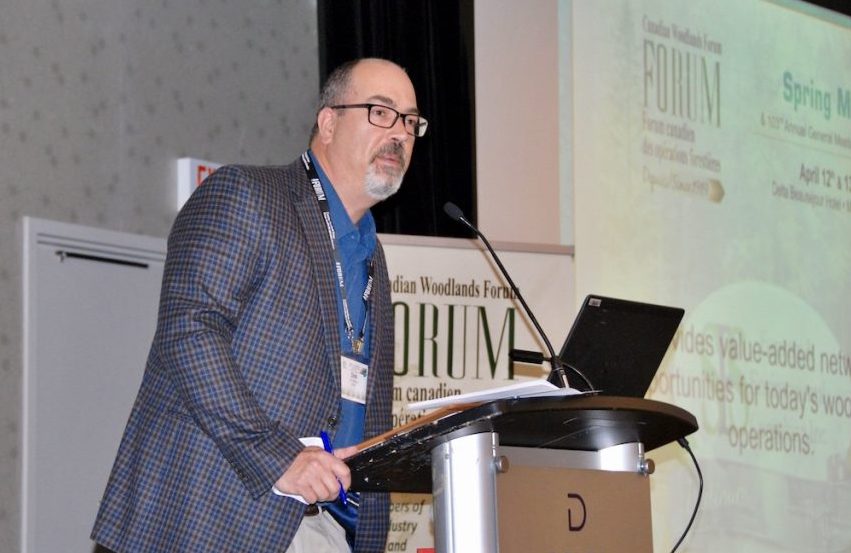 Dirk Nielsen with Weiler Forestry, chairperson of the Canadian Woodlands Forum, welcomes attendees to the 2022 Spring Meeting in Moncton, N.B. Photos: Annex Business Media.
Dirk Nielsen with Weiler Forestry, chairperson of the Canadian Woodlands Forum, welcomes attendees to the 2022 Spring Meeting in Moncton, N.B. Photos: Annex Business Media. Ideas on the future of forestry in Atlantic Canada were brimming at the first in-person Canadian Woodlands Forum (CWF) meeting since the pandemic began, held in Moncton, N.B., last week.
While some speakers made it clear the industry is on the precipice of major change, others celebrated notable successes and offered encouragement for the audience of forestry stakeholders from across the supply chain.
Forest Products Association of Canada (FPAC) president and CEO Derek Nighbor took to the plenary stage first to share his “view from Ottawa,” updating the room on federal political priorities and sentiments when it comes to forestry in Canada.
Nighbor shared the results of the latest national public opinion survey commissioned by FPAC to understand perceptions of forest products and the industry. Drilled down, the results are “pretty darn good,” Nighbor said. “This is not to say we don’t have work in front of us, but we want to say to politicians, this is a sector they can get behind.”
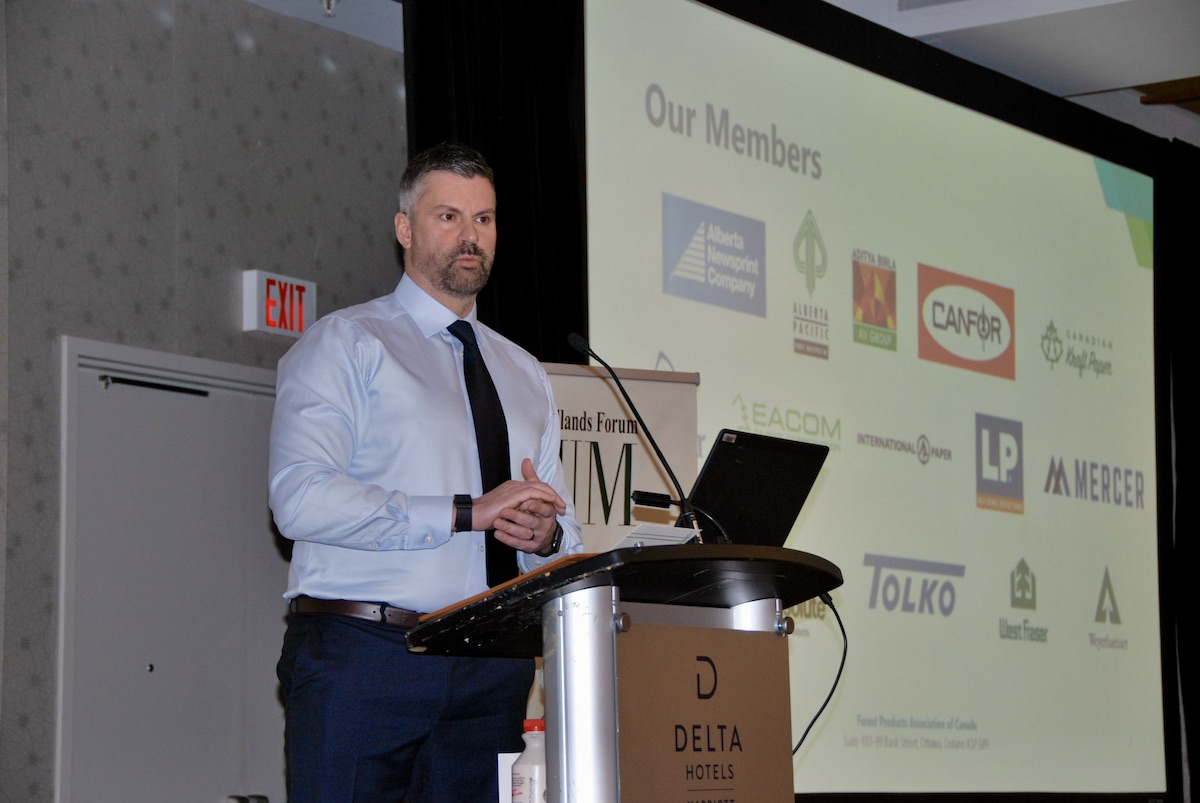
FPAC president and CEO Derek Nighbor.
The federal government has prioritized emissions reductions, Nighbor shared, for which forestry offers an attractive solution. However, “where we are challenged, in Ottawa nobody is watching the full game board. Government is focused on emissions reduction, and funnily enough, we’re not big enough [emissions] contributors to be noticed.”
A priority for FPAC is connecting the dots to position the forest industry to access emissions reductions funding opportunities, Nighbor said. That means continuing to tell the good news story of forestry as a climate change solution.
“We are managing on less than half of the forest land base [in Canada]. Of the managed land base, more than half of that is under conservation measures,” Nighbor shared. “It’s not about forestry versus conservation. Forestry really is a part of that conservation conversation.”
Economic impact by the numbers
Jupia Consultants president David Campbell took the audience through the numbers of forestry’s impact on Atlantic Canada’s economy over the past few years. “The industry is pervasive in terms of economic impact in Atlantic Canada,” he said.
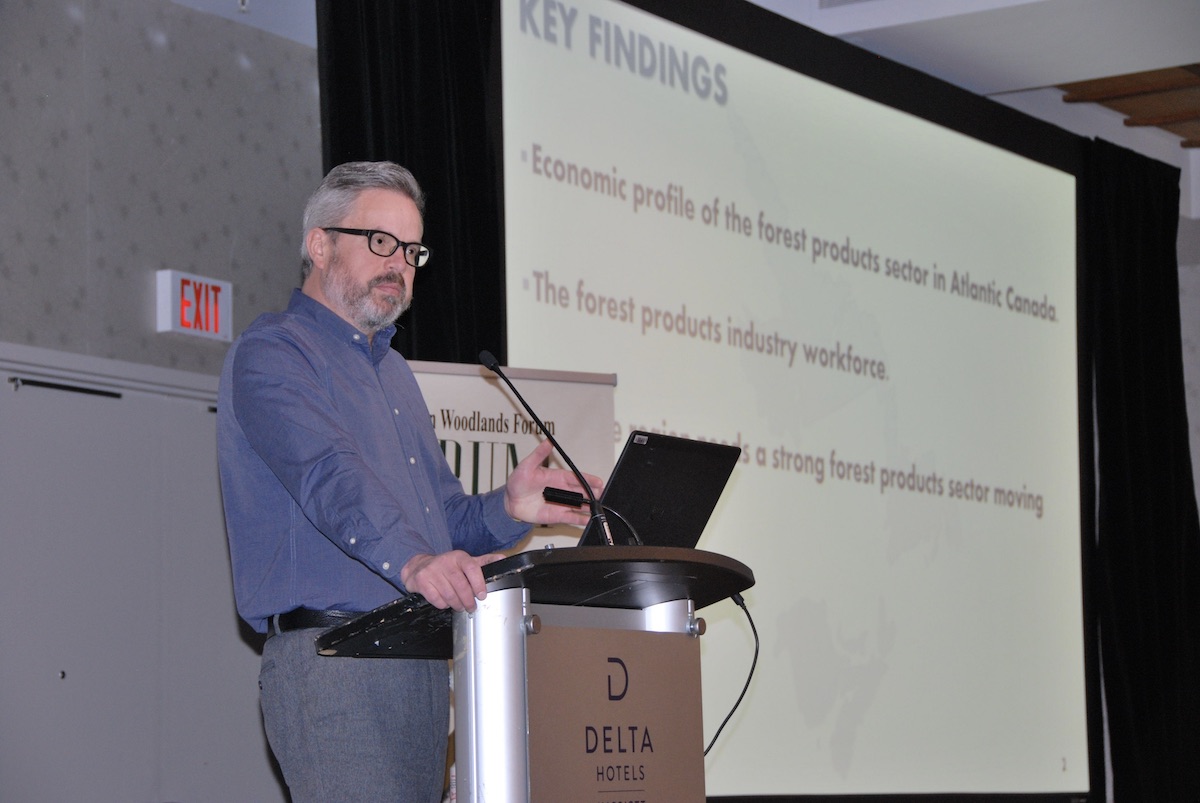
Jupia Consultants president David Campbell.
One out of every four Atlantic Canada municipalities has at least one forest industry employer, totalling 1,126 companies. New Brunswick has the highest numbers at more than 600. However, compared to other provinces, New Brunswick has one of the lowest capex percentages relative to GDP contribution.
“It’s a signal that the industry is uncertain,” Campbell said. “If you really know where the sector was going, you’d be investing in its future.”
Job vacancies continue to plague the industry across Canada, as well as the aging workforce, which will lead to a “tidal wave” of retirement. If the numbers continue, Campbell warned, it will curtail the industry’s ability to grow or even sustain itself.
And without “at least moderate” economic growth of forestry in Atlantic Canada, given its current GDP contributions, sustainably funding public services in the provinces will be a challenge, he said.
Workforce
Many who took to the podium spoke on workforce solutions, reflecting the severity of the issue. The logging operations group heard several case studies of programs and companies that are having success at recruitment and retention.
CWF executive director Peter Robichaud shared an update on their High Performance Logging program that has facilitated well over $6 million in support of contractor training for more than 375 forestry contractors and 1,000 employers since it began in 2011.
The newly launched forestry machine operator program screened a pool of more than 90 candidates down to 16 who went through the program to be eventually placed with contractors. The screening process used simulator training and behavioural assessment to determine if candidates would be good, long-term fits for the jobs, with contractors having the final say.
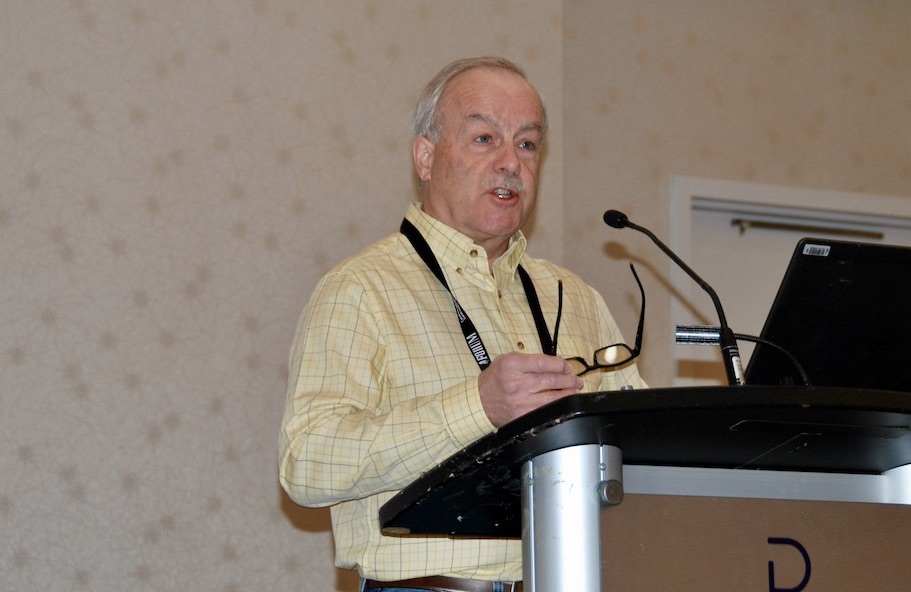
CWF executive director Peter Robichaud.
J.D. Irving and Groupe Savoie both shared lessons learned from immigration programs to fill forestry positions in rural New Brunswick. Both speakers – Barry McAllister with J.D. Irving and Denis Desjardins with Groupe Savoie – said the process is expensive, long, and involved, but the long-term impacts of the programs are significant. “We’re slowly learning how to integrate and bring these people into our communities,” Desjardins said.
McAllister suggested those who are interested in immigration programs begin by reaching out to companies that already have them, as well as government agencies and local settlement agencies.
A notable plenary session from Symplicity Designs’ Mark Symes asked the all-important question: “Why should someone come to work for you?” Symes dismissed money as a long-term motivator for most employees, instead noting that people are driven by purpose, mastery and autonomy. The first step to meeting those needs, Symes said, is for companies to understand their purpose. “Ask yourself: Why do I get up in the morning?” The answer to that question identifies a purpose that the right employees will choose to align with.
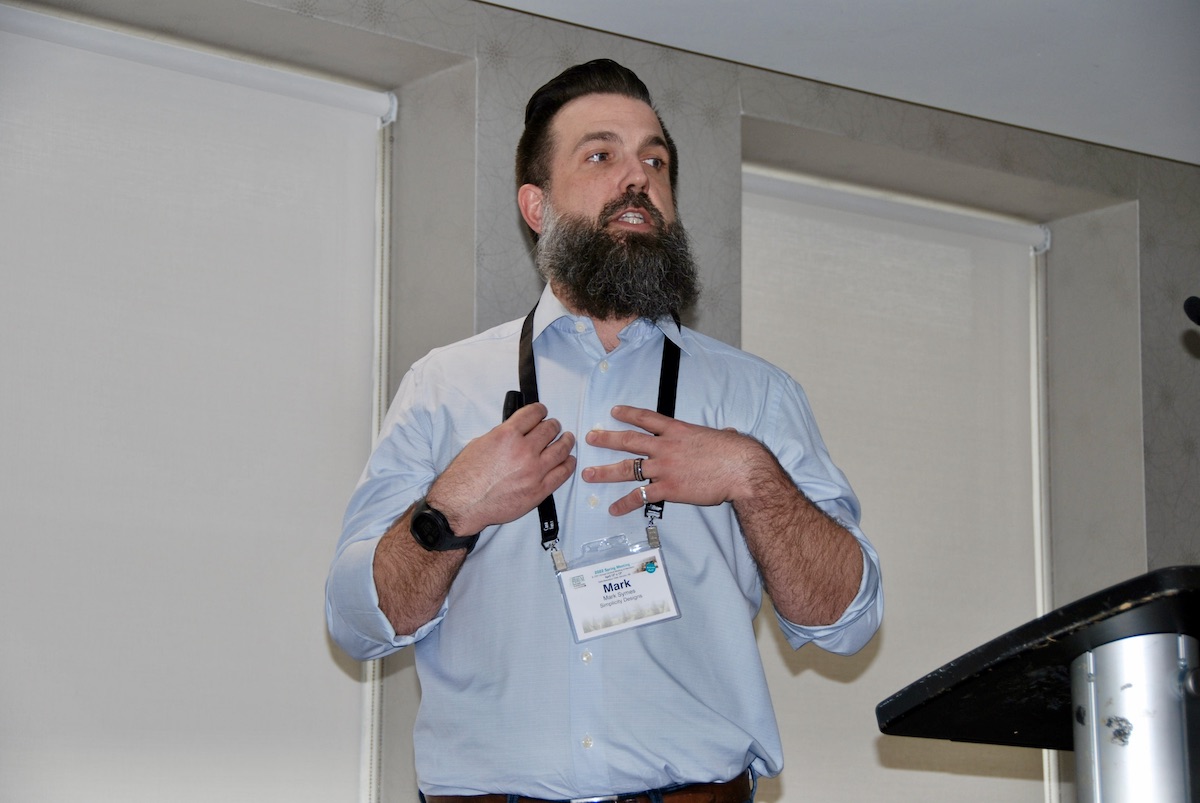
Symplicity Designs founding partner Mark Symes.
Opportunities
There was plenty of optimism shared at the conference, much of which stemmed from presentations around new technology, the carbon market and mass timber.
FPInnovations’ Glen Legere gave an overview of their forestry 4.0 research programs, including advancements on machine automation or user assist. “We’re not going to take an operator out of a machine tomorrow, or next year, or maybe even in five years, but we can automate some of those features and make it easier,” Legere said.
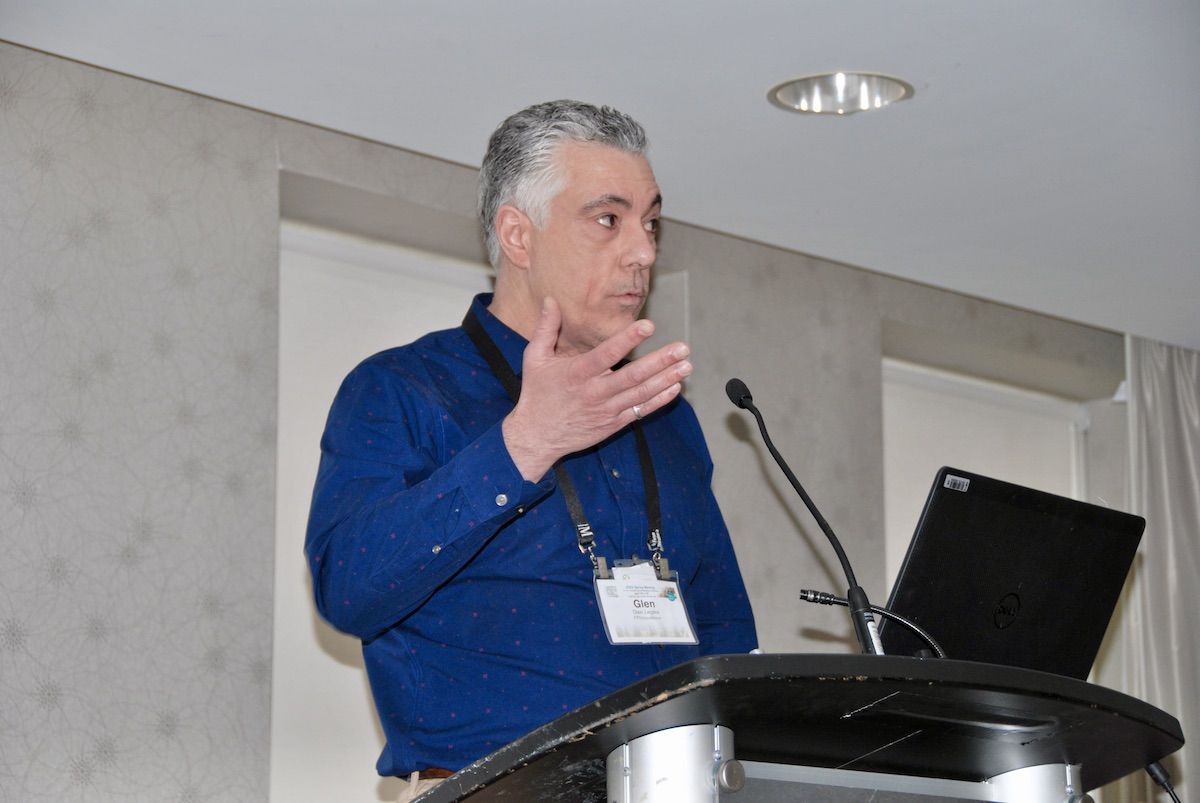
FPInnovations senior director, Glen Legere.
BioNB’s Meaghan Seagrave outlined the significant opportunity the carbon market represents for the forest sector and bioeconomy. Carbon is now a commodity and investors around the world are taking interest. “This is about competitiveness,” she said, “learn where the dollars are going and find a way to be a part of that value chain.”
Seagrave recommended companies take advantage of programs designed to measure, manage and mitigate carbon footprints. “This is about climate-proofing your business. It’s about turning these hurdles into opportunities,” she said.
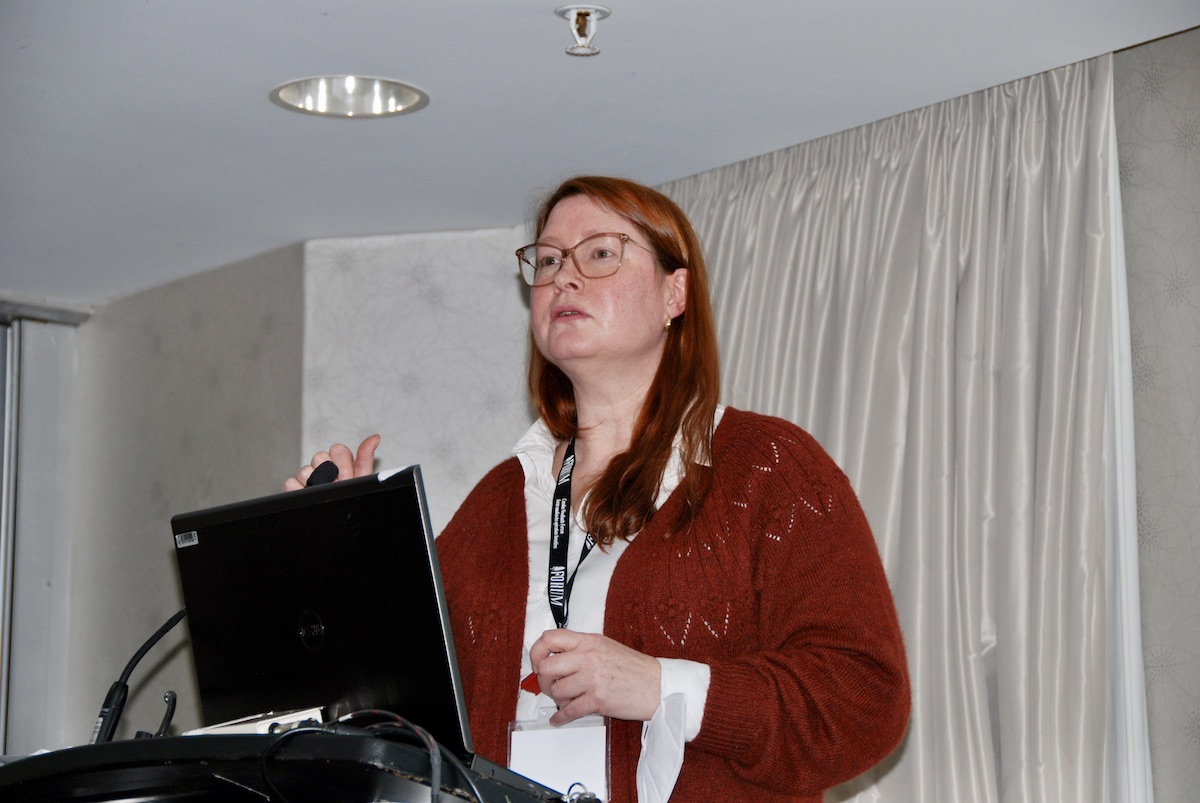
BioNB executive director Meaghan Seagrave.
Mass timber is not only a carbon-positive story, it’s also a value-added story for the sector and companies like Bird Construction are diving in, said Patrick Crabbe, director of mass timber for Bird Construction.
“I can’t even tell you the demand – it’s unbelievable,” he said, but the current supply is not matching the demand.
Crabbe’s presentation shared the value proposition mass timber represents for producers. Glulam is five to seven times the market value of the equivalent board feet of lumber, and cross-laminated timber is three to five times the value, he said.
Whereas lumber companies lose control over their product once it leaves the sawmill, mass timber manufacturers retain control and add value right onto the construction site.
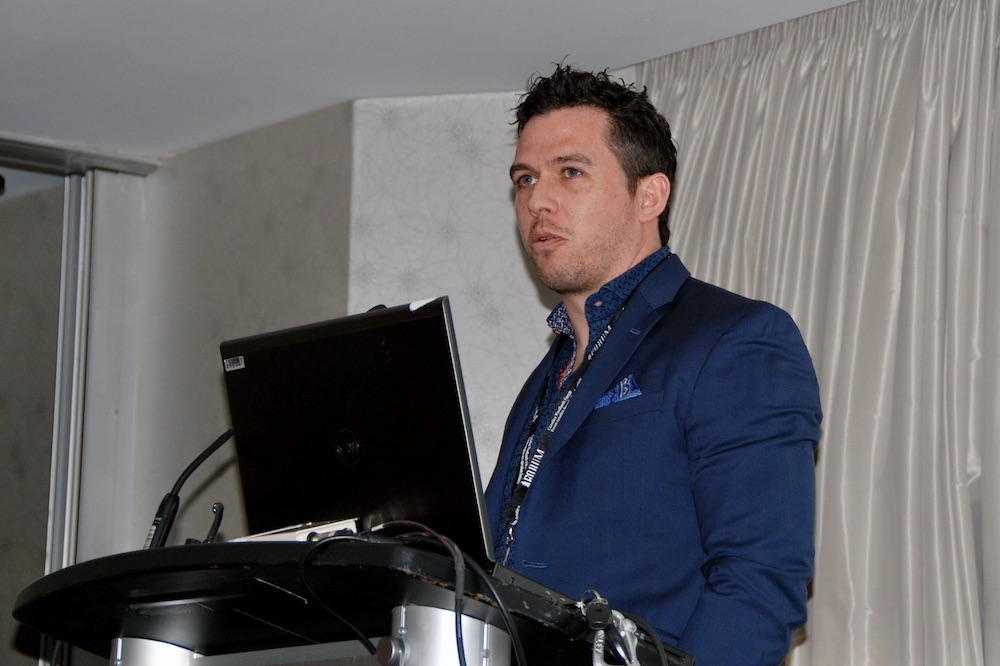
Patrick Crabbe, director of mass timber for Bird Construction.
The CWF is planning for a Fall Meeting this year. Find more details at www.cwfcof.org.
CWF Spring Meeting 2022 gallery
Interested in these pictures? Email mchurch@annexbusinessmedia.com.
Print this page
